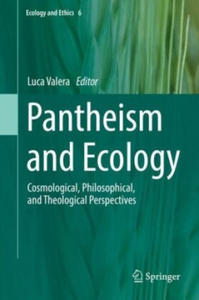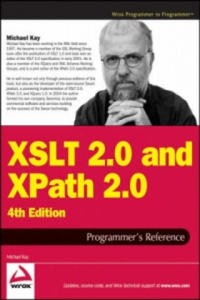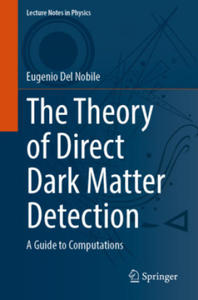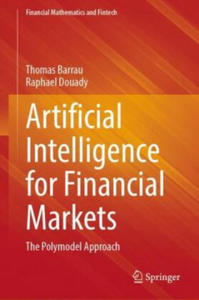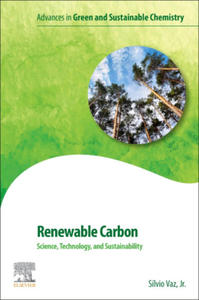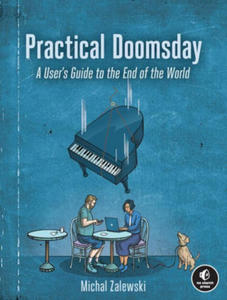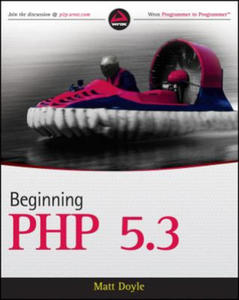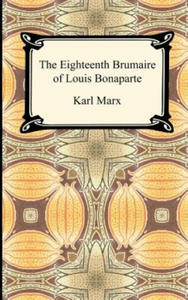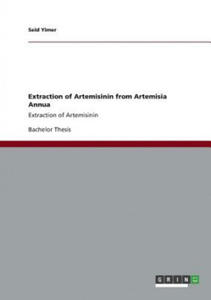teleskopy net a different approach to cosmology 3459
- znaleziono 14 produktów w 3 sklepach
Spalona Żywcem Wyd. Kieszonkowe - Souad
Książki & Multimedia > Książki
Opis - Pierwsze na świecie świadectwo ofiary zbrodni honorowej. Miała siedemnaście lat i zakochała się: zhańbiła rodzinę. Więc rodzina wydała na nią wyrok śmierci... Pokochała go pierwszą miłością. Myślała, że się z nią ożeni. Ale ukochany zniknął, a ona odkryła, że jest w ciąży. A w jej świecie to najcięższa zbrodnia... W zapomnianej przez Boga wiosce w Cisjordanii kobiety są warte mniej niż zwierzęta domowe. Tu mężczyzna jest panem życia i śmierci żony, córki, siostry. Brat może bezkarnie zabić siostrę, matka - córkę, kolejną bezużyteczną dziewczynkę, jaka się urodzi. Tu kobiecie odbiera się godność, a nawet życie zgodnie z odwiecznym obyczajem i uświęconą tradycją. A śmierć jest karą dla dziewczyny, która zhańbi rodzinę. Tak jak Souad. Wyrok wydaje jej ojciec. Szwagier dokonuje egzekucji. Oblewa Souad benzyną i podpala... SOUAD przeżyła - cudem, ale rodzina usiłowała zabić ją nawet w szpitalu. Na zawsze jednak pozostanie straszliwie okaleczona - na ciele i duszy. I wciąż musi się ukrywać; dopóki żyje, jej rodzinę okrywa hańba. Spalona żywcem, opublikowana pod pseudonimem szokująca opowieść o piekle, jakim było jej dzieciństwo i młodość, stała się międzynarodowym bestsellerem. Wydana w 37 w krajach książka przerywa tabu milczenia wobec istniejącej nadal w krajach muzułmańskich barbarzyńskiej tradycji. Nieludzkiego obyczaju, prawa mężczyzn, na mocy którego co najmniej pięć tysięcy kobiet pada co roku ofiarą zbrodni honorowej. Nazwa - Spalona Żywcem Wyd. Kieszonkowe Autor - Souad Oprawa - Miękka Wydawca - Amber Kod ISBN - 9788324159406 Kod EAN - 9788324159406 Wydanie - 1 Rok wydania - 2016 Tłumacz - 31182,maria rostworowska; Format - 110 x 175 x 14 Ilość stron - 224 Podatek VAT - 5% Premiera - 2016-06-23
Sklep: InBook.pl
Kołonotatnik A4/90# Oxford my colours 100101864
Książki & Multimedia > Książki
Opis - Kołonotatnik w energetycznych kolorach.
Sklep: InBook.pl
Walk to the River in Amazonia Berghahn Books
Książki / Literatura obcojęzyczna
It's a great book...The focussing in on the 'feel' of life, the small everyday things, struck me as hugely important. The fascinating conundrums of original and spirit copy...The simplicity and grace of the writing. Michael Taussig, Columbia University The book's integration of cosmology with everyday Mehinaku practice, along with its concise and evocative writing style, makes for an important contribution to Amazonian anthropology ...Stang's book is one of the best examples of how Amazonian research today is beginning to bridge the previous gap between studies of seemingly abstract cosmology and fine-grained ethnography of everyday practice. JRAI ...an extraordinary ethnographic work...outstanding - in the audacious naturalism of its form, the compelling way in which Stang reads Mehinaku reality between the lines, capturing the flow and fluctuations of consciousness as well as the materiality and physicality of their existence. Michael Jackson, Harvard University This is an important study both as ethnography and as an interpretive achievement.To my mind there is no better study from Amazonia that elucidates specifically the archetypal scheme of reality which is an extraordinary notion commonly encountered in Amazonian life-worlds...The book will be a contribution to South American anthropology and, even more significantly, to the growing field of comparative cosmologies and comparative systems of knowledge. Jadran Mimica, University of Sydney This [book] is...refreshing because the normal picture of Amazonian symbolism/cosmology is typically written by men and based on observations of male ritual...Carla...show[s] how ordinary people (in this case, women) think about and experience an enchanted world rather than what the ritual experts (and anthropologists) claim...There is an abundance of clever, imaginative anthropological interpretations of what Amazonians say and do...What very few have ever really asked is how all this...is actually experienced and understood by the people involved. Carla does that and does it very well.Stephen Hugh-Jones, University of Cambridge Our lives are mostly composed of ordinary reality - the flow of moment-to-moment existence - and yet it has been largely overlooked as a subject in itself for anthropological study. In this work, the author achieves an understanding of this part of reality for the Mehinaku Indians, an Amazonian people, in two stages: first by observing various aspects of their experience and second by relating how these different facets come to play in a stream of ordinary consciousness, a walk to the river. In this way, abstract schemata such as 'cosmology,' 'sociality,' 'gender,' and the 'everyday' are understood as they are actually lived. This book contributes to the ethnography of the Amazon, specifically the Upper Xingu, with an approach that crosses disciplinary boundaries between anthropology, philosophy, and psychology. In doing so it attempts to comprehend what Malinowski called the 'imponderabilia of actual life.' Carla Stang received her undergraduate degree at the University of Sydney and was awarded the Frank Bell Memorial Prize for Anthropology for her studies there. In 2005, she earned her Ph.D. in Social Anthropology at the University of Cambridge.Since then she held the position of Visiting Scholar at Columbia University, and is now an Associate Researcher at the University of Sydney. Thus far most of her ethnographic fieldwork has been in the Upper Xingu region of the Brazilian Amazon.
Sklep: Libristo.pl
Pantheism and Ecology Springer, Berlin
Książki / Literatura obcojęzyczna
This book provides a comprehensive overview of the relationship between pantheism and ecology, particularly considering different cultural approaches and diverse religious, theological, and philosophical traditions. Environmental ethics arises from the dangerousness and harmfulness of human beings with respect to nonhuman species and, more generally, with respect to the environment. A common starting point for environmental ethics standpoints is that human beings are responsible for damaging nature. The famous four laws of ecology drafted by Barry Commoner precisely express this guilt on the part of human beings, who very often voluntarily violate the behavioral indications that emerge from nature itself. These aspects concern environmental ethics outlooks. Eco-theology, then, takes a further step: not only do we damage the ecosystem but also, as many authors suggest, when we humans destroy the natural world, we are wounding God. Such an idea implies a possible coincidence of God with the natural world -or the ecosystem. From this assumption, different questions may emerge: what is the kind of coincidence between God and the natural world? Are God and the ecosystem coextensive? If so, are we re-sacralizing the natural world and grounding intrinsic values in theological postulates and statements? These questions lead us to reconsider the cosmological assumptions that ground our environmental judgements, from theology to different religious traditions and cultures to philosophical worldviews. In particular, we will focus on the cosmological assumptions of pantheism (considering its differences with panentheism), discussing the symmetrical (or asymmetrical) relationships between God and the finite ways in which God manifests Godself.In this regard, the book is divided into three main parts: in the first part, the question of pantheism is approached from different traditions and with a special focus on the main thinkers in the history of thought, from Greek Stoicism to the present day. In the second part, some current ecological concerns are considered in relation to pantheistic cosmology: the authors will deepen issues from the discussion of the different "pan-conceptions" to the problem of evil, to Anthropocene. Finally, in the third part, the different chapters will focus on ethical issues in the field of the current environmental crisis with a huge connection with the pantheistic cosmologies. This book is oriented to a wide public, interested in environmental issues and looking for an approach from different cultures and traditions. Evidently, due to its "academic" nature, this book is also intended to be a great support for researchers interested in eco-theology and, more specifically, in the relationship between pantheism and ecology.It is not, in this sense, a "classic" book on environmental ethics, but a book that delves into the fundamentals of environmental philosophy, privileging the Ibero-American approach.
Sklep: Libristo.pl
XSLT 2.0 and XPath 2.0 Programmer's Reference 4e John Wiley & Sons Inc
Książki / Literatura obcojęzyczna
This book is primarily a practical reference book for professional XSLT developers. It assumes no previous knowledge of the language, and many developers have used it as their first introduction to XSLT; however, it is not structured as a tutorial, and there are other books on XSLT that provide a gentler approach for beginners. The book does assume a basic knowledge of XML, HTML, and the architecture of the Web, and it is written for experienced programmers. There's no assumption that you know any particular language such as Java or Visual Basic, just that you recognize the concepts that all programming languages have in common. The book is suitable both for XSLT 1.0 users upgrading to XSLT 2.0, and for newcomers to XSLT. The book is also equally suitable whether you work in the Java or .NET world. As befits a reference book, a key aim is that the coverage should be comprehensive and authoritative. It is designed to give you all the details, not just an overview of the 20 percent of the language that most people use 80 percent of the time.It's designed so that you will keep coming back to the book whenever you encounter new and challenging programming tasks, not as a book that you skim quickly and then leave on the shelf. If you like detail, you will enjoy this book; if not, you probably won't. But as well as giving the detail, this book aims to explain the concepts, in some depth. It's therefore a book for people who not only want to use the language but who also want to understand it at a deep level. The book aims to tell you everything you need to know about the XSLT 2.0 language. It gives equal weight to the things that are new in XSLT 2.0 and the things that were already present in version 1.0. The book is about the language, not about specific products. However, there are appendices about Saxon (the author's own implementation of XSLT 2.0), about the Altova XSLT 2.0 implementation, and about the Java and Microsoft APIs for controlling XSLT transformations, which will no doubt be upgraded to handle XSLT 2.0 as well as 1.0. A third XSLT 2.0 processor, Gestalt, was released shortly before the book went to press, too late to describe it in any detail. But the experience of XSLT 1.0 is that there has been a very high level of interoperability between different XSLT processors, and if you can use one of them, then you can use them all.In the previous edition we split XSLT 2.0 and XPath 2.0 into separate volumes. The idea was that some readers might be interested in XPath alone. However, many bought the XSLT 2.0 book without its XPath companion and were left confused as a result; so this time, the material is back together. The XPath reference information is in self-contained chapters, so it should still be accessible when you use XPath in contexts other than XSLT. The book does not cover XSL Formatting Objects, a big subject in its own right. Nor does it cover XML Schemas in any detail. If you want to use these important technologies in conjunction with XSLT, there are other books that do them justice. This book contains twenty chapters and eight appendixes (the last of which is a glossary) organized into four parts. The following section outlines what you can find in each part, chapter, and appendix. Part I: Foundations: The first part of the book covers essential concepts. You should read these before you start coding.If you ignore this advice, as most people do, then you read them when you get to that trough of despair when you find it impossible to make the language do anything but the most trivial tasks. XSLT is different from other languages, and to make it work for you, you need to understand how it was designed to be used. Chapter 1: XSLT in Context: This chapter explains how XSLT fits into the big picture: how the language came into being and how it sits alongside other technologies. It also has a few simple coding examples to keep you alert. Chapter 2: The XSLT Processing Model: This is about the architecture of an XSLT processor: the inputs, the outputs, and the data model. Understanding the data model is perhaps the most important thing that distinguishes an XSLT expert from an amateur; it may seem like information that you can't use immediately, but it's knowledge that will stop you making a lot of stupid mistakes. Chapter 3: Stylesheet Structure: XSLT development is about writing stylesheets, and this chapter takes a bird's eye view of what stylesheets look like.It explains the key concepts of rule-based programming using templates, and explains how to undertake programming-in-the-large by structuring your application using modules and pipelines. Chapter 4: Stylesheets and Schemas: A key innovation in XSLT 2.0 is that stylesheets can take advantage of knowledge about the structure of your input and output documents, provided in the form of an XML Schema. This chapter provides a quick overview of XML Schema to describe its impact on XSLT development. Not everyone uses schemas, and you can skip this chapter if you fall into that category. Chapter 5: The Type System: XPath 2.0 and XSLT 2.0 offer strong typing as an alternative to the weak typing approach of the 1.0 languages. This means that you can declare the types of your variables, functions, and parameters, and use this information to get early warning of programming errors. This chapter explains the data types available and the mechanisms for creating user-defined types. Part II: XSLT and XPath Reference: This section of the book contains reference material, organized in the hope that you can easily find what you need when you need it.It's not designed for sequential reading, though you might well want to leaf through the pages to discover what's there. Chapter 6: XSLT Elements: This monster chapter lists all the XSLT elements you can use in a stylesheet, in alphabetical order, giving detailed rules for the syntax and semantics of each element, advice on usage, and examples. This is probably the part of the book you will use most frequently as you become an expert XSLT user. It's a "no stone unturned" approach, based on the belief that as a professional developer you need to know what happens when the going gets tough, not just when the wind is in your direction. Chapter 7: XPath Fundamentals: This chapter explains the basics of XPath: the low-level constructs such as literals, variables, and function calls. It also explains the context rules, which describe how the evaluation of XPath expressions depends on the XSLT processing context in which they appear. Chapter 8: XPath: Operators on Items: XPath offers the usual range of operators for performing arithmetic, boolean comparison, and the like.However, these don't always behave exactly as you would expect, so it's worth reading this chapter to see what's available and how it differs from the last language that you used. Chapter 9: XPath: Path Expressions: Path expressions are what make XPath special; they enable you to navigate around the structure of an XML document. This chapter explains the syntax of path expressions, the 13 axes that you can use to locate the nodes that you need, and associated operators such as union, intersection, and difference. Chapter 10: XPath: Sequence Expressions: Unlike XPath 1.0, in version 2.0 all values are sequences (singletons are just a special case). Some of the most important operators in XPath 2.0 are those that manipulate sequences, notably the "for" expression, which translates one sequence into another by applying a mapping. Chapter 11: XPath: Type Expressions: The type system was explained in Chapter 5; this chapter explains the operations that you can use to take advantage of types. This includes the "cast" operation which is used to convert values from one type to another.A big part of this chapter is devoted to the detailed rules for how these conversions are done.Chapter 12: XSLT Patterns: This chapter returns from XPath to a subject that's specific to XSLT. Patterns are used to define template rules, the essence of XSLT's rule-based programming approach. The reason for explaining them now is that the syntax and semantics of patterns depends strongly on the corresponding rules for XPath expressions. Chapter 13: The Function Library: XPath 2.0 includes a library of functions that can be called from any XPath expression; XSLT 2.0 extends this with some additional functions that are available only when XPath is used within XSLT. The library has grown immensely since XPath 1.0. This chapter provides a single alphabetical reference for all these functions. Chapter 14: Regular Expressions: Processing of text is an area where XSLT 2.0 and XPath 2.0 are much more powerful than version 1.0, and this is largely through the use of constructs that exploit regular expressions. If you're familiar with regexes from languages such as Perl, this chapter tells you how XPath regular expressions differ. If you're new to the subject, it explains it from first principles.Chapter 15: Serialization: Serialization in XSLT means the ability to generate a textual XML document from the tree structure that's manipulated by a stylesheet. This isn't part of XSLT processing proper, so (following W3C's lead) it's separated it into its own chapter. You can control serialization from the stylesheet using an declaration, but many products also allow you to control it directly via an API. Part III: Exploitation: The final section of the book is advice and guidance on how to take advantage of XSLT to write real applications. It's intended to make you not just a competent XSLT coder, but a competent designer too. The best way of learning is by studying the work of others, so the emphasis here is on practical case studies. Chapter 16: Extensibility: This chapter describes the "hooks" provided in the XSLT specification to allow vendors and users to plug in extra functionality. The way this works will vary from one implementation to another, so we can't cover all possibilities, but one important aspect that the chapter does cover is how to use such extensions and still keep your code portable.Chapter 17: Stylesheet Design Patterns: This chapter explores a number of design and coding patterns for XSLT programming, starting with the simplest "fill-in-the-blanks" stylesheet, and extending to the full use of recursive programming in the functional programming style, which is needed to tackle problems of any computational complexity. This provides an opportunity to explain the thinking behind functional programming and the change in mindset needed to take full advantage of this style of development. Chapter 18: Case Study: XMLSpec: XSLT is often used for rendering documents, so where better to look for a case study than the stylesheets used by the W3C to render the XML and XSLT specifications, and others in the same family, for display on the web? The resulting stylesheets are typical of those you will find in any publishing organization that uses XML to develop a series of documents with a compatible look-and-feel. Chapter 19: Case Study: A Family Tree: Displaying a family tree is another typical XSLT application.This example with semi-structured data-a mixture of fairly complex data and narrative text-that can be presented in many different ways for different audiences. It also shows how to tackle another typical XSLT problem, conversion of the data into XML from a legacy text-based format. As it happens, this uses nearly all the important new XSLT 2.0 features in one short stylesheet. But another aim of this chapter is to show a collection of stylesheets doing different jobs as part of a complete application. Chapter 20: Case Study: Knight's Tour: Finding a route around a chessboard where a knight visits every square without ever retracing its steps might sound a fairly esoteric application for XSLT, but it's a good way of showing how even the most complex of algorithms are within the capabilities of the language. You may not need to tackle this particular problem, but if you want to construct an SVG diagram showing progress against your project plan, then the problems won't be that dissimilar. Part IV: Appendices: A ppendix A: XPath 2.0 Syntax Summary: Collects the XPath grammar rules and operator precedences into one place for ease of reference.Appendix B: Error Codes: A list of all the error codes defined in the XSLT and XPath language specifications, with brief explanations to help you understand what's gone wrong. Appendix C: Backward Compatibility: The list of things you need to look out for when converting applications from XSLT 1.0. Appendix D: Microsoft XSLT Processors: Although the two Microsoft XSLT processors don't yet support XSLT 2.0, we thought many readers would find it useful to have a quick summary here of the main objects and methods used in their APIs. Appendix E: JAXP: the Java API for XML Processing: JAXP is an interface rather than a product. Again, it doesn't have explicit support yet for XSLT 2.0, but Java programmers will often be using it in XSLT 2.0 projects, so the book includes an overview of the classes and methods available. Appendix F: Saxon: At the time of writing Saxon (developed by the author of this book) provides the most comprehensive implementation of XSLT 2.0 and XPath 2.0, so its interfaces and extensions are covered in some detail. Appendix G: Altova: Altova, the developers of XML Spy, have an XSLT 2.0 processor that can be used either as part of the development environment or as a freestanding component.This appendix gives details of its interfaces. Appendix H: Glossary Note: CD-ROM/DVD and other supplementary materials are not included as part of eBook file.
Sklep: Libristo.pl
Explorations +2CD-ROMs McGraw-Hill
Inne 1
The text takes all of the features that have made Arny Explorations a top-selling textbook and applies them under a stars-first approach.This new edition continues to offer the most complete technology/new media support package available. That technology/new media package includes: 6 NEW Interactives; PowerWeb (web-based research and interactive quizzing - very current); Online Learning Center (that allows instructors to take their course to the web if they choose); and a new CD-ROM that offers new and different text material/animations/links to even further enhance student comprehension.Updated Coverage. Some of the updates include: 1)Revised the Kepler's third law math by adding more explanation and putting the detailed math in a box called "Extending Our Reach: Weighing the Sun."; 2) Added a short section on electromagnetic radiation; 3)The Doppler Shift; 4)Expansion of the Extra-Solar Planets; 5)Cosmological Constant.|VOLUMES! Arny is now available in 2, full color, volumes. Volume 1 covers the Solar System, Volume 2 covers Stars and Galaxies.|6 New Interactives (on the text website and CD-ROM): Each Interactive will allow students to manipulate parameters and gain a better understanding of topics such as Blackbody Radiation, The Bohr Model, Retrograde Motion, Cosmology, Solar System Builder and the H-R Diagram by watching the affect of these manipulations.|FREE Interactive Essential Study Partner CD-ROM. This CD-ROM includes animations, video, audio, links to web sites, and planetarium software. The CD-ROM is hybrid, so it's compatible on both MAC and Windows systems.|"Re-modeling" boxes have been renamed to "The Scientific Method At Work," to better emphasize the function of the Scientific Method in astronomy. These boxes deal with the dynamic nature of scientific models, explaining how new technologies and information lead to the evolution and refinement of our theories.|Analogy Sketches are included in the margins. Analogies are an essential part of the Arny text. Analogy sketches help to further the concept by giving students an image to work with.|PowerWeb subscription included with each new textbook. Harness the assets of the Web to keep your course current with PowerWeb! This online resource provides high quality, peer-reviewed content including up-to-date articles from leading periodicals and journals, current news, weekly updates with assessment, interactive exercises, Web research guide, study tips, and much more!|Comprehensive Web Site: The web site gives instructors the tools they need, and provides study aids and enrichment for students. Instructors will have access to sample syllabi and lecture outlines. The web site will also include animations, hundreds of images, chapter summaries and key terms, web links, scorable practice quizzes, interactive tutorials, and much more.|Accessible writing style that allows coverage of technically complex ideas without confusing students. Tom Arny gives the students a reason to read every sentence.|"Observational Activities": Many additional activities are included that students can try at home or in class. These are scattered throughout the text. These activities grab students attention and make studying a more active learning experience. These could also be used by the instructor for in-class or homework assignments.|Detailed Art. Arny has made a point to take each illustration a step further than the norm. Each illustration in Arny is annotated to describe the small processes that are actually happening within the illustration. Where possible, a photo is inserted next to the illustration for comparison so students can see the process in reality.|This CD-ROM will grab the students' attention and will greatly enhance the coverage of this subject.|These visually remind students what the important analogies are; helps students and instructors locate the analogies in the text.|Students and professors get free access to this powerful Internet-based tool for studying and researching astronomy.|Students and instructors will be better able to quickly incorporate the Internet into their classroom. Students will have a large number of resources at their fingertips on the world wide web.|Students read the text and learn from what they read allowing the professor more class time to explore more concepts.|What this offers the student is a step-by-step explanation of what is going on within the illustration creating greater understanding of the concept.|Would you like to incorporate some technology into your course that lets students investigate and explore difficult topics (Blackbody Radiation, The Bohr Model, Retrograde Motion, Cosmology, Solar System Builder and the H-R Diagram) with the aid of scientifically accurate applets?|Do you want your students to have more resources available to study and learn from? Would your students like to have fun learning while utilizing an interactive CD?|Would you like to have your students have more experience with the scientific method?|Do your students learn better from visualizing the explanation? Do you think analogies will help with that visualization and helping to expand their understanding?|Do you want to incorporate more technology into your class - easily?|Do you find that the internet is becoming a staple in your students learning experience? Or would you even like to simply start experimenting?|Are your students frustrated with their current text not being very "user friendly"? Do they have to read and reread pages to understand the material?|Do you simply not have a lab component and would like to incorporate a lab portion without cost?|Do your students tend to skim through textbooks looking at the illustrations for information when they are studying? Would you like the illustrations to take advantage your students visual learning style?
Sklep: Albertus.pl
Theory of Direct Dark Matter Detection Springer Nature Switzerland AG
Książki / Literatura obcojęzyczna
This book is a pedagogical guide on how to make computations in direct dark matter (DM) detection. The theory behind the calculation of direct detection cross sections and rates is presented, touching aspects related to elementary particle physics, hadronic physics, nuclear physics, and astrophysics. The book is structured in self-contained sections, covering several topics ranging from the scattering kinematics to the phenomenology of direct DM searches. It follows a model-independent approach, aiming at providing the readers with all that is needed to understand the theory and start their own analysis. Meant for graduate students and researchers with interests in particle physics and phenomenology, it is enriched with several worked examples from standard and non-standard particle DM models. Senior researchers working in different areas related to dark matter, like particle and nuclear physics, astrophysics, and cosmology, find in this book a useful and updated guide for reference.
Sklep: Libristo.pl
Artificial Intelligence for Financial Markets Springer Nature Switzerland AG
Książki / Literatura obcojęzyczna
This book introduces the novel artificial intelligence technique of polymodels and applies it to the prediction of stock returns. The idea of polymodels is to describe a system by its sensitivities to an environment, and to monitor it, imitating what a natural brain does spontaneously. In practice this involves running a collection of non-linear univariate models. This very powerful standalone technique has several advantages over traditional multivariate regressions. With its easy to interpret results, this method provides an ideal preliminary step towards the traditional neural network approach. The first two chapters compare the technique with other regression alternatives and introduces an estimation method which regularizes a polynomial regression using cross-validation. The rest of the book applies these ideas to financial markets. Certain equity return components are predicted using polymodels in very different ways, and a genetic algorithm is described which combines these different predictions into a single portfolio, aiming to optimize the portfolio returns net of transaction costs. Addressed to investors at all levels of experience this book will also be of interest to both seasoned and non-seasoned statisticians.
Sklep: Libristo.pl
Renewable Carbon Elsevier - Health Sciences Division
Książki / Literatura obcojęzyczna
Renewable Carbon: Science, Technology and Sustainability identifies production pathways and technologies for the production of chemicals and presents relevant information to bridge the gap between reaction engineering and process design. It uses a multidisciplinary approach, focusing on important aspects of the basic science, the technological advantages (and hurdles) as well as key sustainability aspects. It incorporates organic, inorganic, and biochemical synthesis and analyses the myriad technologies available, including nanotechnology, biotechnology, and thermochemistry. The book is divided in three parts comprising aspects of science, technology, and sustainability. Starting from synthesis of carbon derivatives through multiple pathways (Science), moving on into technologies available for its generation (Technology), and concluding with the assessment of sustainability and new supply chains (Sustainability), the chapters include valuable information to identify and assess different pathways at different levels of design. This book serves as a valuable reference for academics, research scientists, and industry practitioners in green chemistry, chemical engineering, materials science, and environmental engineering aiming to deploy a "net zero" industry in the broader field of sustainability. Includes a review of sustainable feedstocks containing renewable carbon such as biomass, CO2 and recycling materials Provides a compendium of technologies to explore renewable carbon sources Compiles the latest up-to-date information on renewable products and materials to be utilized in industry
Sklep: Libristo.pl
Practical Doomsday No Starch Press,US
Książki / Literatura obcojęzyczna
Disasters happen. Be prepared. Here s how.As a leading security engineer, Michal Zalewksi has spent his career methodically anticipating and planning for cyberattacks. In Practical Doomsday, Zalewski applies the same thoughtful, rational approach to preparing for disasters of all kinds. By sharing his research, advice, and a healthy dose of common sense, he ll help you rest easy knowing you have a plan for the worst even if the worst never comes.The book outlines a level-headed model for evaluating risks, one that weighs the probability of scenarios against the cost of preparing for them. You ll learn to apply that model to the whole spectrum of potential crises, from personal hardships like job loss or a kitchen fire, to large-scale natural disasters and industrial accidents, to recurring pop-culture fears like all-out nuclear war. You ll then explore how basic lifestyle adjustments, such as maintaining a robust rainy-day fund, protecting yourself online, and fostering good relationships with your neighbors, can boost your readiness for a wide range of situations. You ll also take a no-nonsense look at the supplies and equipment essential to surviving sudden catastrophes, like prolonged power outages or devastating storms, and examine the merits and legal implications of different self-defense strategies.You ll learn: How to identify and meaningfully assess risks in your life, then develop strategies for managing them Ways to build up and diversify a robust financial safety net a key component of nearly all effective preparedness strategies How to adapt your prep plans to a variety of situations, from shelter-in-place scenarios to evacuations by car or on foot Sensible approaches to stockpiling food, water, and other essentials, along with recommendations on what supplies are actually worth having Disasters happen, but they don t have to dominate your life. Practical Doomsday will help you plan ahead, so you can stop worrying about what tomorrow may bring and start enjoying your life today.
Sklep: Libristo.pl
Beginning PHP 5.3 John Wiley & Sons Inc
Książki / Literatura obcojęzyczna
This book is intended for anyone starting out with PHP programming. If you've previously worked in another programming language such as Java, C#, or Perl, you'll probably pick up the concepts in the earlier chapters quickly; however, the book assumes no prior experience of programming or of building Web applications. That said, because PHP is primarily a Web technology, it will help if you have at least some knowledge of other Web technologies, particularly HTML and CSS. Many Web applications make use of a database to store data, and this book contains three chapters on working with MySQL databases. Once again, if you're already familiar with databases in general -- and MySQL in particular -- you'll be able to fly through these chapters. However, even if you've never touched a database before in your life, you should still be able to pick up a working knowledge by reading through these chapters. What This Book Covers This book gives you a broad understanding of the PHP language and its associated technologies.You explore a wide range of topics, including: installing a copy of the PHP engine on Ubuntu Linux, Windows, and Mac OS X;other ways you can install or use PHP; how to write a simple PHP script. basic PHP language concepts. variables, data types, operators, expressions, and constants. how to change the flow of your scripts by creating decisions and loops. if , else , and switch statements; the ternary operator; and the do , while , for , break , and continue statements. how to nest loops, and how to mix decisions and looping with blocks of HTML. PHP's handling of strings, or sequences of characters; how to create strings; how to retrieve characters from a string; and how to manipulate strings with functions such as strlen() , substr() , strstr() , strpos() , str-replace() , and printf() , to name but a few. arrays -- variables that can hold multiple values. You learn the difference between indexed and associative arrays, and find out how to create arrays and access their individual elements; array manipulation, including functions such as print-r() , array-slice() , count() , sort() , array-merge() , and list() .You also learn how to create foreach loops, as well as how to work with multidimensional arrays. functions -- blocks of code that you can use again and again. You look at how to call built-in functions, and how to work with variable functions. You also study how to create your own functions, including defining parameters, returning values, understanding scope, and using anonymous functions. Other function-related topics such as references and recursion are also explored. object-oriented programming. You look at the advantages of an object-oriented approach, and learn how to build classes, properties, and methods, and how to create and use objects. You also explore more advanced topics such as overloading, inheritance, interfaces, constructors and destructors, autoloading, and namespaces. how to use PHP to create interactive Web forms. You learn how to create HTML forms, how to capture form data in PHP, and how to use PHP to generate dynamic forms. You also explore file upload forms and page redirection. how to preserve an application's state between page views. You explore three different strategies: query strings, cookies, and PHP sessions. Includes an example user login system.PHP's file and directory handling functions. You learn how to open and close files; how to find out more information about a file; how to read from and write to files; how to work with file permissions; how to copy, rename, and delete files; and how to manipulate directories.Simple text editor as an example. databases in general and MySQL in particular, and how to work with MySQL databases using PHP. You learn some database and SQL theory; look at how to connect to MySQL from PHP; and study how to retrieve, insert, update, and delete data in a MySQL database. PEAR, the PHP Extension and Application Repository. It's a large collection of reusable code modules that can really help to speed up your application development. You look at how to install and use PEAR packages, and explore three useful packages: Net-UserAgent-Detect , HTML-Table , and HTML-QuickForm . ways that your PHP applications can interact with the outside world.A detailed look at date and time handling, including various useful built-in date functions, as well as the DateTime and DateTimeZone classes.Also how to work closely with HTTP request and response headers, how to retrieve Web server information, and how to send email from within your scripts. using PHP to generate graphics on the fly. You study some computer graphics fundamentals, then look at how to create new images, as well as modify existing images. Along the way you explore colors, drawing functions, image formats, transparency, opacity, and generating text within images. regular expressions. These clever pattern-matching tools let you search for very specific patterns of text within strings; regular expression syntax, how to use PHP's regular expression functions to search for and replace patterns of text. Lots of examples are included to make the concepts clear. XML -- eXtensible Markup Language -- and how to manipulate XML from within your PHP scripts. You learn about XML and its uses, and look at various ways to read and write XML with PHP, including XML Parser, the XML DOM extension, and SimpleXML. You also take a brief look at XML stylesheets, including XSL and XSLT. how to configure PHP, and all the configuration directives available. alternative databases to MySQL that are supported by PHP. using PHP to write command-line scripts, further enhancing the power and flexibility of your applications.Also, as you'd imagine, this book covers the new features added to PHP in version 5.3. However, if you're still using an older version of PHP, don't panic -- the vast majority of the book applies to all versions of PHP.
Sklep: Libristo.pl
Cisco ASA for Accidental Administrators Soundtraining.Net
Książki / Literatura obcojęzyczna
Cisco ASA for Accidental Administrators is a major update to the previous Accidental Administrator ASA book. This new edition is packed with 48 easy-to-follow hands-on exercises to help you build a working firewall configuration from scratch. Based on software version 9.x, it continues as the most straight-forward approach to learning how to configure the Cisco ASA Security Appliance, filled with practical tips and secrets learned from years of teaching and consulting on the ASA. There is no time wasted on boring theory. The essentials are covered in chapters on installing, backups and restores, remote administration, VPNs, DMZs, usernames, transparent mode, static NAT, port address translation, access lists, DHCP, password recovery, logon banners, AAA (authentication, authorization and accounting), filtering content and more. Inside this concise, step-by-step guide, you'll find: **How to backup and restore software images and configurations **How to configure different types of VPNs, including AAA authentication **The secrets to successfully building and implementing access-lists All this information is presented in a straight-forward style that you can understand and use right away. The idea is for you to be able to sit down with your ASA and build a working configuration in a matter of minutes. Of course, some of the more advanced configs may take a little longer, but even so, you'll be able to "get it done" in a minimal amount of time!
Sklep: Libristo.pl
Eighteenth Brumaire of Louis Bonaparte Digireads.com
Książki / Literatura obcojęzyczna
Karl Heinrich Marx (1818-1883) was a famous German philosopher, political economist and theorist, historian and revolutionary whose ideas laid the foundation of twentieth century communism and socialism. Most noted for his work "The Communist Manifesto", Marx's materialist analyses of the bourgeois capitalist society initiated a revolution that has had profound effects on the development of human civilization. The basic philosophical assumptions of Marx's approach, despite some of the later ideological and at times quasi-religious adaptations of his thought, are based upon fundamental notions of the European Enlightenment; human reason can successfully alleviate the problems of life. Marx published "The Eighteenth Brumaire of Louis Bonaparte" in 1852. The "Eighteenth Brumaire" refers to November 9, 1799 in the French Revolutionary Calendar-the day Napoleon Bonaparte made himself dictator. In this piece, Marx traces how the clash of different public interests manifest themselves in the complex net of political struggles, and in particular the contradictory relationships between the external form of a struggle and its real social content.
Sklep: Libristo.pl
Extraction of Artemisinin from Artemisia Annua Grin Publishing
Książki / Literatura obcojęzyczna
Bachelor Thesis from the year 2008 in the subject Engineering - Chemical Engineering, grade: A, Bahir Dar University (Bahir Dar University Engineering Faculity), course: Chemical Engineering, language: English, abstract: AbstractMalaria disease is endemic in least developed countries like Ethiopia. The rapid development of drug-resistant malaria parasite strain leaves the need for new effective anti-malarial drugs. Artemisinin is a sesquiterpene lactone found in the leaves and flowers of plants Artemisia annua L and have different chemical structures and higher efficacy than others. The content of artemisinin is very small and from 0.5 to 1.2 % of dry weight of plants in Ethiopia. Extraction of artemisinin from Artemisia annua is mainly performed using hydrocarbon extraction processes. Extraction with Supercritical CO2, ethanol, ionic liquids, hydroflourocarbon HFC-134a and hexane extraction are extraction technologies and compared majorly in terms of their extraction efficiency, cost and drawback to environment. Since artemisinin is only present in the epidermis of the leaves, leaves were only washed on the outside by stirring appeared to be the most appropriate method and the first step in this research was solvent extraction using hexane. Step followed purify by repeated crystallization. Laboratory scale production data and procedures were listed for aremisinin extraction process. By using those data large scale production method was designed. And did material and energy balance calculations for large scale production process carried out by taking scientific approach followed by feasibility study. As a result my extractor was very large and it has 14.37m3 capacities it wasn t found in market. So I designed the required larger extractor that should fulfill the target of the project i.e. with simple, rapid, cost effective, environmental friendly and practical method for the isolation of artemisinin from Artemisia annua. The design the extractor I used the optimum ratio between solvent and leaves, optimum extraction time, optimum extraction temperature and optimum design of the stirrer paddles. In these thesis work extractor design, skirt design, bolt design, reinforcement calculations, preliminary equipment design (sizing), economic analysis calculations were included. In the profitability analysis Return on investment, payback period and net present worth calculated and the project was checked its feasibility. The payback period is 1.22yrs and it is economically acceptable that means this market is promising in Ethiopia in addition to save millions of Ethiopian and African from killer malaria.Key words: artemisinin, sesquiterpene lactone, hexane extraction
Sklep: Libristo.pl
Sklepy zlokalizowane w miastach: Warszawa, Kraków, Łódź, Wrocław, Poznań, Gdańsk, Szczecin, Bydgoszcz, Lublin, Katowice
Szukaj w sklepach lub całym serwisie
1. Sklepy z teleskopy net a different approach to cosmology 3459
2. Szukaj na wszystkich stronach serwisu
t1=0.031, t2=0, t3=0, t4=0, t=0.031




